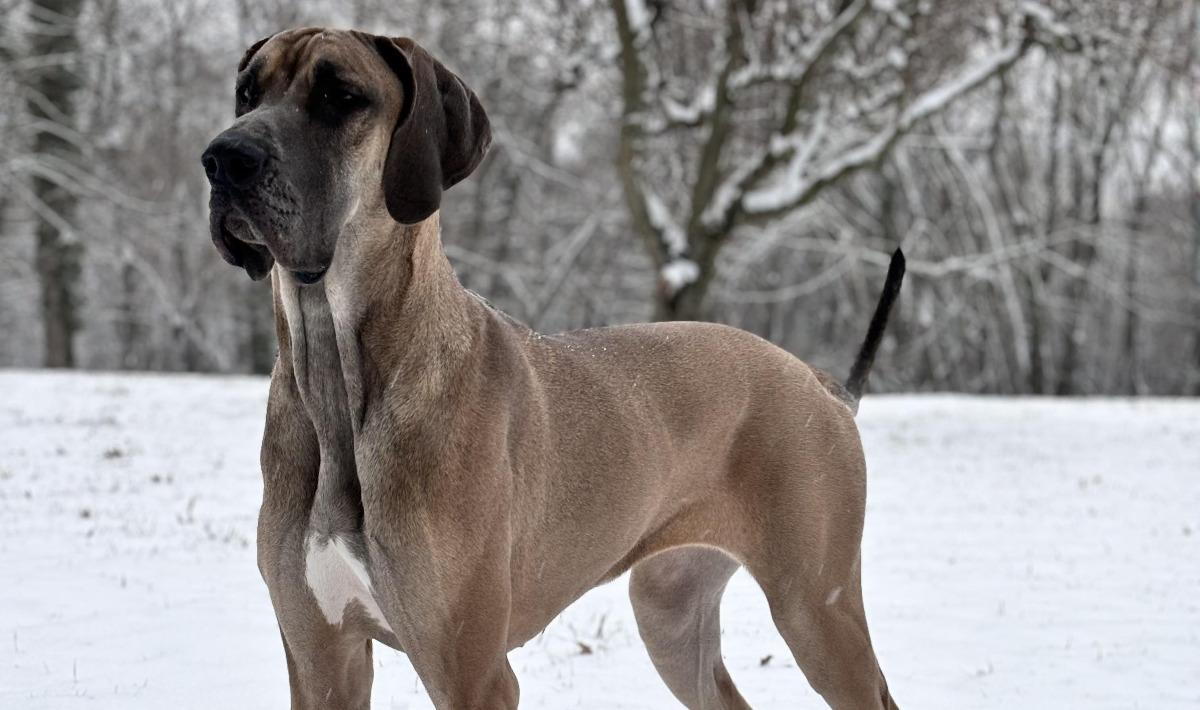Cold Weather Hazards for Pets

- posted: Jan. 07, 2024
Cold Weather Hazards for Pets
With our first snowfall of the year, it’s time to remind everyone how to keep pets safe and healthy during winter weather. Here are some tips for keeping our furry friends feeling fine on frigid days!
How long should pets be allowed to play outdoors? This depends on a lot of factor including your pet’s age, coat, breed, medical conditions. A young healthy dog or cat can probably stay outside for about thirty minutes if the weather is at or above freezing. The colder it is, the less time they should spend outside. Limit time outside if your dog has a thin coat, is elderly, or has a medical condition. Some dogs enjoy the cold and snow more than others. A Husky or Bernese Mountain dog is more likely to want stay outdoors in the winter than a Greyhound or Boston Terrier but even dogs who love the cold should spend limited time outdoors if temperatures dip below freezing.
Remember, dogs and cats can develop hypothermia and frostbite. With hypothermia, watch for shivering, pale gums, stumbling, lethargy or collapse. Bring pets indoors and gradually warm them with blankets. Don’t use heating pads as pets could suffer burns or overheat. Frostbite can occur on areas like tails, ears and toes with prolonged exposure to extreme cold. Affected skin may look bluish grey or pale, feel cold, and may be painful. The skin becomes red, swollen and may peel and become more painful as it warms. If you think your pet has frostbite, apply a warm towel or tepid water to the area but don’t rub or use hot water as this can cause more damage. If the skin starts to look dark or black or feels hard, your pet needs immediate veterinary attention.
Check pets’ paws—ice can stick to fur between toes and cause discomfort. Pads can be cut by ice or irritated by ice melt and road salt and ingestion of large amounts of road salt can cause mouth irritation and upset stomach. Wipe his paws after your pet has been out for a walk, or consider boots or a paw protecting wax or salve such as those used on sled dogs or even petroleum jelly to protect the pads.
Many antifreeze and de-icing windshield products contain a toxic chemical called ethylene glycol This compound is sweet making it attractive to animals and can be deadly if ingested as it causes kidney failure. Make sure pets do not have access to antifreeze, clean up any spills immediately, and store products where pets cannot access them. Consider using pet safe versions of anti-freeze, window deicers and ice melt products that contain non-toxic propylene glycol instead.
Bathe pets less frequently in winter to combat dry skin. If your pet has some mild dander but is not itchy, no worries. But, if skin is red, your pet is losing patches of hair or if she seems extremely itchy, make an appointment with your vet. It may not be just dry skin. Cold weather allergies and skin infections are possible and proper medical care is needed to treat itch and infection.
One final reminder—Bang on your car hood before starting the car. Cats and wildlife sometimes seek refuge under the hood of a car in cold weather and can be burned or cut with a fan belt if the car is started while the animal is on the engine block.
We hope these tips help keep your pets warm and safe this winter! Enjoy the snow!
This blog brought to you by the Patton Veterinary Hospital serving Red Lion, York and the surrounding communities.
https://www.avma.org/resources-tools/pet-owners/petcare/cold-weather-animal-safety
https://www.southernliving.com/culture/pets/why-do-dogs-love-snow https://www.petmd.com/dog/emergency/common-emergencies/e_dg_frostbitehttps://www.americanhumane.org/fact-sheet/cold-weather-pet-tips/?gclid=EAIaIQobChMI-YLz0diT4AIVRT0MCh3wMAeIEAAYASAAEgKr9fD_BwE
https://trupanion.com/pet-care/pet-safety/winter-tips
https://www.aspca.org/pet-care/general-pet-care/cold-weather-safety-tips
Location
Patton Veterinary Hospital
425 E Broadway
Red Lion, PA 17356
